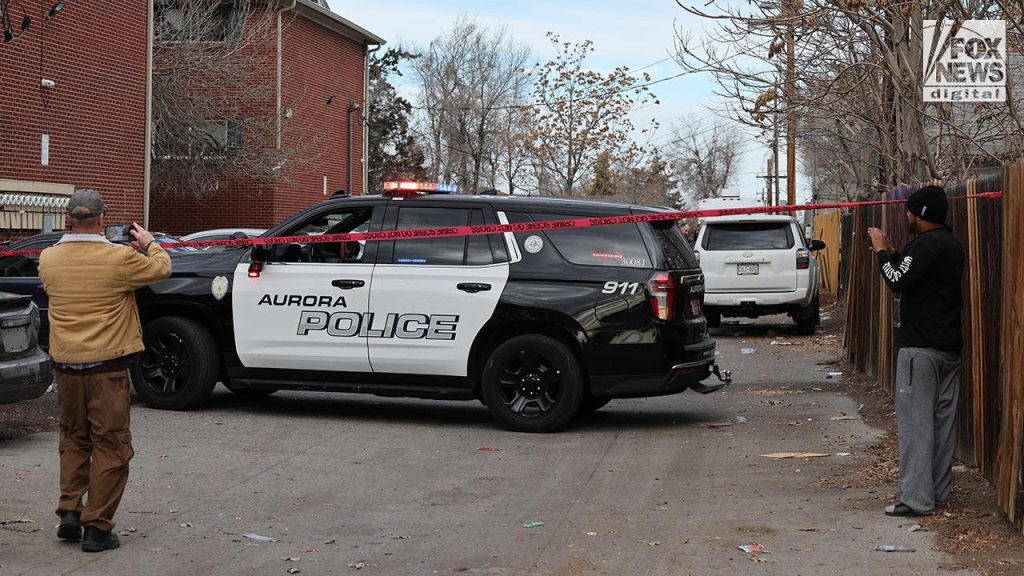The Edge at Lowry apartment complex in Aurora, Colorado, has become a hotbed of criminal activity, prompting a judge to order its emergency closure. City Judge Shawn Day issued the ruling last week, citing “an immediate threat to public safety” stemming from the rampant crime plaguing the complex. The closure, however, is not expected to be implemented for several months, leaving residents and the surrounding community in a precarious situation for the foreseeable future. The city’s petition for closure paints a grim picture of the complex, detailing a long history of violent crimes and property crimes.
Aurora Police Chief Todd Chamberlain, in an affidavit supporting the closure, described the Edge at Lowry as an “epicenter” of criminal activity, highlighting the control and fear exerted by criminal elements over the residents. The complex has become a haven for the notorious Venezuelan prison gang, Tren de Aragua (TdA), further exacerbating the already dire situation. The gang’s presence has instilled fear and contributed to a surge in violent crimes, making the complex a dangerous place for residents and the surrounding community. The city’s decision to pursue closure underscores the severity of the situation and the urgent need to address the escalating crime.
The involvement of the Tren de Aragua gang is a significant factor in the escalating violence at the Edge at Lowry. This dangerous Venezuelan prison gang has established a presence in the complex, contributing to the atmosphere of fear and intimidation. Nine suspected members of the gang were recently charged in connection with a brutal home invasion, kidnapping, and robbery that occurred at the complex in December. The incident highlights the extreme violence associated with the gang and underscores the danger they pose to the community. The arrests mark a significant step in addressing the gang’s influence at the complex, but the ongoing presence of other members and the potential for further violence remains a concern.
The December incident involved the brutal attack and kidnapping of a couple residing at the Edge at Lowry. The nine suspects allegedly forced their way into the couple’s apartment, where they bound, beat, stabbed, and kidnapped the victims, leaving them hospitalized with serious injuries. The perpetrators also stole jewelry from the victims. The brutality of the attack shocked the community and highlighted the escalating violence associated with the Tren de Aragua gang. This incident served as a catalyst for the city’s decision to pursue the closure of the complex, demonstrating the urgent need to address the rampant crime and restore safety to the community.
The investigation into the December home invasion initially resulted in the apprehension of 19 suspects. Following interviews with investigators, three individuals were released after being cleared of involvement in the crime. The remaining 16 suspects were taken into custody by U.S. Immigration and Customs Enforcement (ICE). Nine of these individuals have been formally charged, while the remaining seven are still under investigation. The collaboration between local law enforcement and ICE highlights the complex nature of the case and the need for a multi-agency approach to address the issue of transnational gangs operating within the United States. The ongoing investigation will likely reveal further details about the gang’s activities and potentially lead to additional arrests.
The case of the Edge at Lowry apartment complex underscores the challenges faced by communities grappling with the rise of transnational gangs and the associated surge in violent crime. The complex’s closure, while a drastic measure, reflects the desperate need to address the immediate threat to public safety. The ongoing investigation into the Tren de Aragua gang and the prosecution of those responsible for the December home invasion are crucial steps in dismantling the gang’s operations and restoring a sense of security to the community. The situation also highlights the need for comprehensive strategies to address the root causes of gang violence and provide support to communities affected by this growing threat. Furthermore, it emphasizes the importance of collaboration between local, state, and federal law enforcement agencies in combating transnational criminal organizations.



